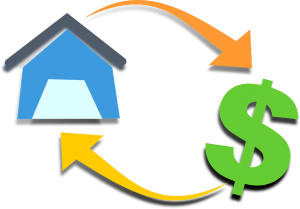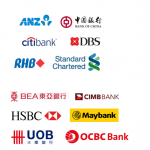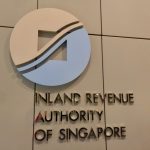MAS Clarifies Loan-to-Value and Total Debt Servicing Ratio Rules for Residential Mortgages and Mortgage Equity Withdrawal Loans
In response to public and media queries, the Monetary Authority of Singapore (MAS) has clarified the application of the loan-to-value (LTV) limits and total debt servicing ratio (TDSR) for residential mortgages and mortgage equity withdrawal loans (MWLs). This will help individuals and businesses explore options to meet their cash flow needs.
For Individuals (including Sole Proprietors)
The TDSR will not apply to:
- deferment of mortgage repayments (for residential, commercial, or industrial properties);
- refinancing of owner-occupied residential mortgages;
- mortgage equity withdrawal loans if the LTV ratio does not exceed 50%; and
- unsecured credit facilities such as credit cards and personal loans.
Borrowers are not subject to TDSR when they apply to defer either their principal payment or both principal and interest payments for their residential mortgages.
This relief, announced by MAS on 31 March 2020 as part of an industry-wide package, applies to residential property purchase loans and Mortgage Equity Withdrawal Loans, including those under Debt Reduction Plans, and extends to both owner-occupied (HDB and private) and investment properties. Interest will accrue only on the deferred principal amount.
Table of Contents
Most major retail banks have extended payment deferments to individuals with commercial or industrial property loans as well. As in the case of residential mortgages, these borrowers are not subject to TDSR when they defer their repayments. They can approach their lenders to seek assistance and explore possible relief measures.
Borrowers are not subject to TDSR and LTV limits when they refinance their loans for owner-occupied residential properties. This will help borrowers with fixed rate mortgage packages that are out of the lock-in period who want to refinance their loans to obtain a lower interest rate.
Borrowers who take up Mortgage Equity Withdrawal Loans secured on their existing private residential or non-residential properties are not subject to TDSR if the LTV ratio does not exceed 50%. This adjustment was introduced in March 2017 and is intended to help individuals monetise equity in properties that they already own.
Borrowers are not subject to TDSR requirements when they take up unsecured credit facilities, such as personal loans and credit cards. However, there are minimum income requirements for such facilities, and MAS has also put in place measures such as the industry-wide borrowing limit to promote financial prudence and avoid the excessive accumulation of debt that would lead to future financial strain. In this regard, we urge individuals to exercise prudence when tapping into credit lines.
For Business Owners and SMEs
SME borrowers are not subject to TDSR when they apply for payment deferments on their secured property loans. This payment deferment relief was announced by MAS on 31 March as part of the financial industry’s relief package for SMEs. (Defined as firms or sole proprietors which have annual sales turnover of up to S$100m or employment size of up to 200 workers.)
Businesses that take up Mortgage Equity Withdrawal Loans secured on residential or non-residential properties are not subject to TDSR and LTV limits. (These include corporations, limited liability partnerships, and partnerships.) This is provided under MAS’ current rules to facilitate the provision of credit to businesses, some of which may rely on Mortgage Equity Withdrawal Loans to finance their operations.
A Mortgage Equity Withdrawal Loans or home equity loans lets you borrow money, while using your house as collateral.
Home equity loan is another option available to homeowners who may have a tight cash situation but have have a valuable house at their disposal, which they may sell and downgrade. But a home equity loan lets you get money out of your house, without having to lose it.
 There are plenty of advantages: when your house is the collateral, the bank feels a lot more secure; they know you can’t exactly pack up your house and run away with it. Because there’s something they can foreclose on, banks consider home equity loans to be low-risk, secured loans. That means they charge a super-low interest rate, seldom above 1.3 per cent per annum. For reference, that’s less than a third of your CPF Ordinary Account rate (up to 3.5 per cent per annum), and about 1/6th of a personal loan rate (about six per cent per annum).
There are plenty of advantages: when your house is the collateral, the bank feels a lot more secure; they know you can’t exactly pack up your house and run away with it. Because there’s something they can foreclose on, banks consider home equity loans to be low-risk, secured loans. That means they charge a super-low interest rate, seldom above 1.3 per cent per annum. For reference, that’s less than a third of your CPF Ordinary Account rate (up to 3.5 per cent per annum), and about 1/6th of a personal loan rate (about six per cent per annum).
That super-low interest rate means home equity loans are quite cheap, and can provide a much bigger loan than you’d get through, say, a personal installment loan. Most other, unsecured loans can only lend you up to four times your monthly salary.
On top of this, the government in 2017, made regulatory changes to home equity loan restrictions. If your house is already paid up, you can borrow up to half its value, without having to meet Total Debt Servicing Ratio (TDSR) restrictions.
Sadly though, home equity loans can only be gotten for private a private property.
HDB rules say, “HDB flats can only be mortgaged to banks or financial institutions to finance the purchase of the flat itself. You are not allowed to use your HDB flat, which has been fully paid for, as collateral to banks to raise credit facilities for private reasons.“
If you are looking for a home equity loan, or are you trying to borrow money to buy a home, there are good deals and bad deals. If you don’t want to get stuck with a bad one, be careful:
- Beware of great deals that come to you by way of the phone, mail, WhatsApp or internet. More often than not, these too-good-to-be-true offers are scams.
- Beware of renovation contractors who offer to finance work on your home.
- If you need a home equity loan, check with a mortgage broker.
- Read all paperwork carefully before you sign anything! A sales person may try to rush you into signing. Don’t fall for this.
- Take your time and get help. Insist on getting copies of all of the papers ahead of time. Take plenty of time to review them. Show them to a lawyer if you can.
This is how home equity loans works:
Suppose you have purchased a property in 2010 for $650,000.
Loan was 80% = $520,000 amortized over 30 years.
In 2018, a new valuation was done and the property is worth $1 million.
The current loan amount is $440,000.
If this property loan is the only one you have in Singapore, then you may qualify for 80% lending on valuation, which is $800,000.
Equity home loan amount = (80% * valuation) less current loan amount less CPF usage including accrued interest.
Assuming you have used $160,000 CPF with accrued interest, this is the home equity loan amount you would get:
$800,000 – $440,000 – $150,000 = $200,000
Together with the outstanding loan, the total debt on the property now would be $640,000.
People who should consider home equity loans are:
- Owners of second or subsequent investment properties;
- People looking to consolidate their debts;
- Parents who want to help out their children.
Home equity loans are useful for people who are trying to consolidate their loans. The are also helpful for parents who are thinking of helping out their children – either to buy a property of their own, or to get out of a tight situation. If you have multiple properties, iCompareLoan might be able to work out a solution for you to use Mortgage Equity Withdrawal Loans to invest.






